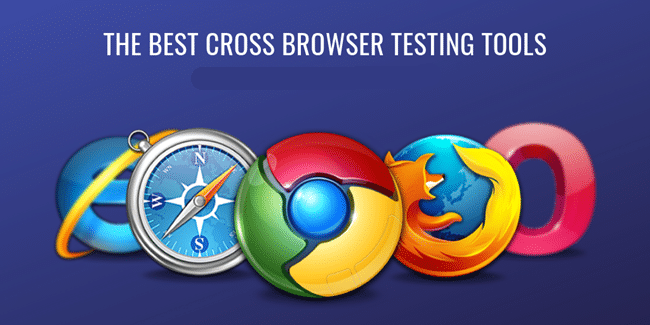In this digital and speed-oriented era, online access to web browsers is very important to the vast majority of professionals, developers, testers, and even ordinary users. Whether working remotely or testing on websites through various browsers—and just wanting the availability of the browser environment from another device—in today’s technology, online web browsers are an easy and resourceful solution. The following discussion will cover the top five tools that run a web browser online, focusing on features, benefits, and use cases.
LambdaTest
LambdaTest is an AI-powered test execution platform that lets you perform manual and automated tests at scale with over 3000+ real devices, browsers, and OS combinations.
It allows access to a huge number of real browsers and OSs to ensure that the websites or applications built by a developer or tester work as expected across all types of environments. At the core of LambdaTest are strong features, a user-friendly interface, and high browser coverage.
Key Features:
- Real-Browser Testing: LambdaTest enables testing on actual devices and browsers, which will let users test their websites and get accurate results. It finds issues that creep up on certain devices or browsers and solves them immediately.
- Parallel Testing: Run multiple tests in different browsers and devices altogether to save a lot of time by increasing efficiency.
- Automated Testing: It supports automated testing with popular frameworks like Selenium, Cypress, and many others. This feature is especially useful for large-scale projects that need extensive testing.
- Geolocation Testing: This allows you to test sites in different locations around the world to ensure they perform well for users living in various regions of the world.
- Integrations: It integrates with popular tools like Jira, Slack, and Trello. This makes it quite easy to manage and track testing efforts.
Use Cases:
- Cross-Browser Testing: This will be the best way forward for developers and testers who intend to test whether websites can run on a number of browsers and devices.
- Automated Testing: LambdaTest provides automation testing services to teams working on large-scale projects by ensuring that tests are carried out fast.
- Geolocation Testing: With LambdaTest, companies targeting audiences located across regions can test sites on mobile and desktop for performance in different locations.
TestingBot
TestingBot is a cloud-based solution that allows users to test their websites and mobile applications against all real browsers and devices. It offers both manual and automated testing, hence a versatile tool for developers, testers, and teams to ensure compatibility between browsers and across devices.
Key Features:
- Real-Browser Testing: TestingBot allows access to real browsers and devices, hence reliability and accuracy in test results.
- Automated Testing: It supports famous automation testing frameworks like Selenium, Appium, and Cypress, thereby providing more ease in automating the entire testing process.
- Parallel Testing: Several tests can be run concurrently over different browsers and devices. This will save much time, hence making testing more effective.
- CI/CD Integration: It provides easy integration with all Continuous Integration and Continuous Deployment tools, such as Jenkins, Travis CI, CircleCI, etc., for continuous testing of your development pipeline.
- Reporting: Detailed test reports, along with screenshots, logs, and videos, will be presented for debugging and fixing issues.
Use Cases:
- Cross-Browser and Cross-Device Testing: TestingBot is specially made for teams dealing with projects that have to be deployed on different browsers and devices.
- Automated Testing: TestingBot automated testing for those teams that have huge loads of testing to handle, hence making the process easier and quicker.
- Continuous Integration: Since the integration of TestingBot with the tools for CI/CD was easy, it is a really great solution for teams looking to integrate continuous testing into their development workflows.
Applitools
Applitools is a SaaS testing platform majoring in visual testing and cross-browser compatibility. With AI-powered visual recognition, it detects the slightest visual differences between pages to provide an identical user experience across all browsers and devices. Applitools integrates very well with many test automation frameworks, hence becoming a powerful tool for both developers and testers.
Key Features:
- Visual AI Testing: Applitools executes visual testing with the aid of artificial intelligence to ensure your web application looks pixel-perfect across different browsers and devices.
- Cross-Browser Testing: Applitools can execute visual validations on multiple browsers and devices in parallel, ensuring cross-browser compatibility.
- Automated Visual Testing: Use Applitools to integrate seamlessly with any of the popular test automation frameworks—Selenium, Cypress, and more—so you can automate visual testing within your CI/CD pipeline.
- Baselining and Management: Visual baselines should be managed to ensure they are then compared for effective change detection, allowing only the intentional changes to go through to the final products.
- Clever but Maintenance-Free Testing: Applitools recognizes all dynamic content automatically, without the need for manual test maintenance.
Use Cases:
- Visual Regression Testing: Applitools is great for any team that wants to ensure the integrity of their web applications is visually intact across a variety of browsers and devices.
- It means cross-browser compatibility; Applitools will let developers and testers check the look, feel, and functionality of apps across a variety of environments.
- Automated Visual Testing: Applitools is going to integrate with a number of the more commonly used test automation frameworks in situations where one wants to automate his or her visual testing processes.
CrossBrowserTesting
CrossBrowserTesting is a cloud-based testing platform that allows web browsers to run online for cross-browser testing. It opens access to a huge number of browsers, devices, and operating systems. Hence, the developers and testers are able to check that their website or app works fine in all these different environments. CrossBrowserTesting is known for its simplicity of usage and wide coverage of browsers.
Key Features:
- Live Testing: CrossBrowserTesting offers interactive testing in live environments on actual devices and browsers so that users can actually see how their websites are performing in real-time. Automated Testing: It also runs automated testing and is integrated with Selenium and other frameworks, making it easy to run tests across multiple browsers and devices.
- Visual Testing: There are visual testing tools within CrossBrowserTesting that enable comparing screenshots of your websites across different browsers and devices, pointing to the visual differences.
- Local Testing: Secure local testing by CrossBrowserTesting tests websites and applications hosted on your local machine.
- Record and Playback: Every test session you conduct can be recorded and replayed later to analyze the results or share them with the team.
Use Cases:
- Cross-Browser Compatibility Testing: CrossBrowserTesting will be very helpful for developers and testers aiming to test the compatibility of their websites across different browsers and devices.
- Visual Regression Testing: CrossBrowserTesting offers visual testing tools that help teams run their tests on design and layout consistency on a variety of platforms.
- Automated Testing: CrossBrowserTesting supports automated testing, doing pretty well at this, hence making it an excellent choice for teams with large-scale testing needs.
Google Cloud Shell
Google Cloud Shell is the first free online software that allows running a web browser in the cloud for a development environment. Although designed to assist developers working on projects in Google Cloud, Google Cloud Shell has an inbuilt web preview feature that users can use to run and test web applications directly from the cloud. This makes it quite a useful tool for developers who would like to test their web apps in a cloud environment.
Key Features:
- Cloud-based dev environment: With the fully integrated Google Cloud development environment right in the cloud, Google Cloud Shell includes code editors and version control tools.
- Web Preview: The preview of your web app is made easy with the help of Google Cloud Shell’s built-in web preview. It allows one to execute and interact with applications directly in the browser from the cloud.
- Integrated Tools: It has a set of tools that can aid in managing your projects, including the Google Cloud SDK and a command-line tool called Cloud.
- Persistent Storage: Google Cloud Shell provides 5 GB of persistent storage where you can store your work and resume it later from any device.
- Integration with Google Cloud: Because of the integration with Google Cloud, a developer can run and test cloud-based applications very easily.
Use Cases:
- Cloud-based development: Google Cloud Shell is useful for a developer working on Google Cloud projects, which requires an in-browser text editor and a cloud-based development environment.
- Quick Web App Testing: Developers may sometimes need to have a quick look at their web app in a browser without necessarily leaving their development environment; therefore, this web preview capability of Google Cloud Shell would be very helpful.
- Integrated Development and Testing: Google Cloud Shell rolls all the important tools into one system and, as such, seeks to simplify the development and testing pipeline of a team working on Google Cloud.
Conclusion
It has become a paramount practice for any developer, tester, or business to run web browsers online in order to make sure that websites and applications work well across a wide range of environments. Tools like LambdaTest, CrossBrowserTesting, and Google Cloud Shell are recognized in this article as powerful solutions for the access of web browsers online, each with their unique features and benefits.
Be it cross-browser testing, mobile application testing, automated testing, or cloud-based development, there is a tool at one’s beck and call for these purposes. With the help of these tools, you will be in a position to automate your testing processes and make them compatible with all platforms while maintaining high-quality standards in your web applications to meet the challenges of today’s diverse population.
Ultimately, this would depend on what you are really going to use it for: the scope of your testing, whether automation is desired, or if you want flawless integration into your development environment. Whichever tool is chosen, running web browsers online serves as good practice to really improve testing and lead toward the success of a digital project.

















